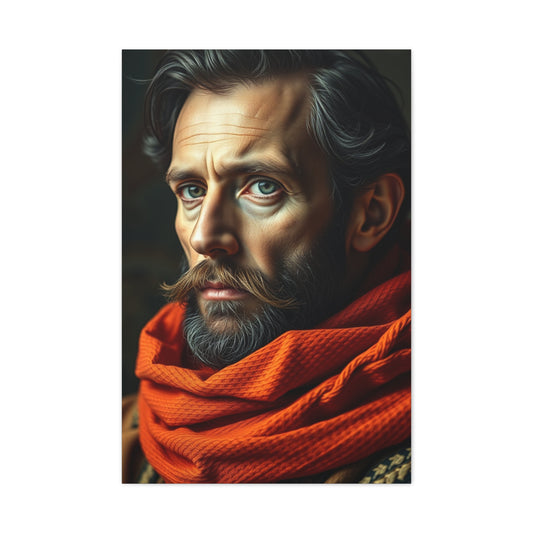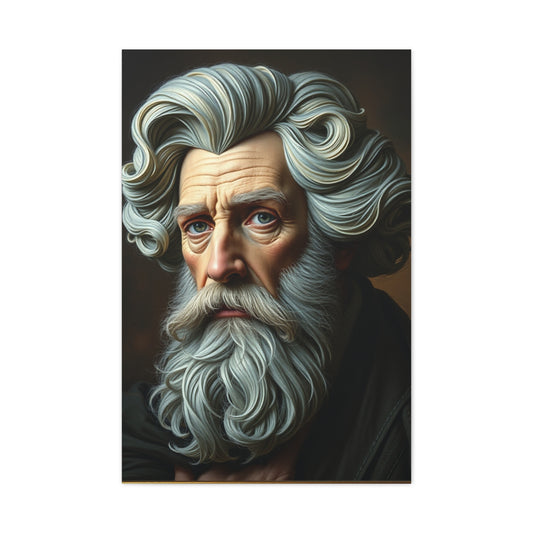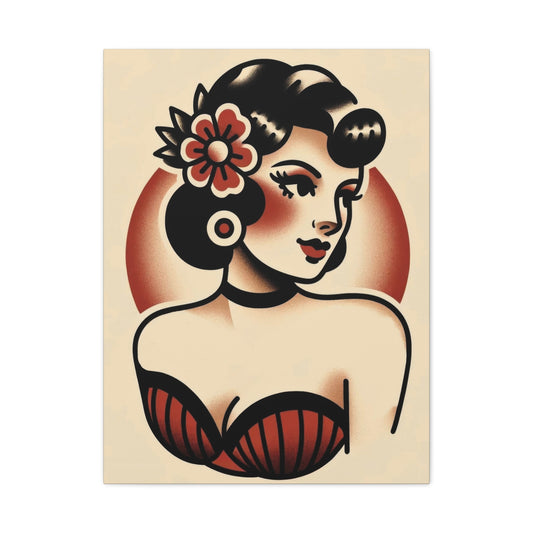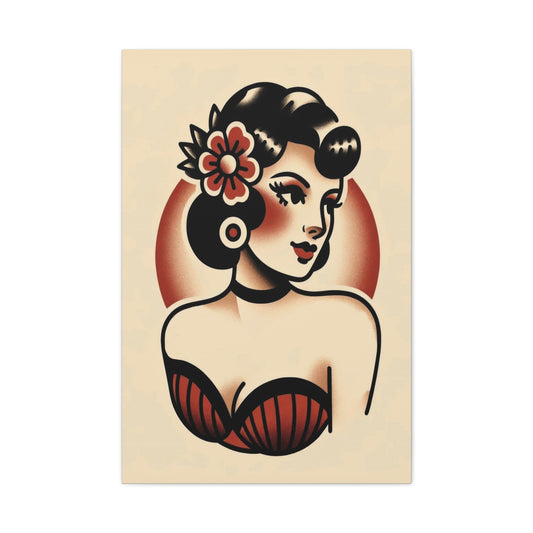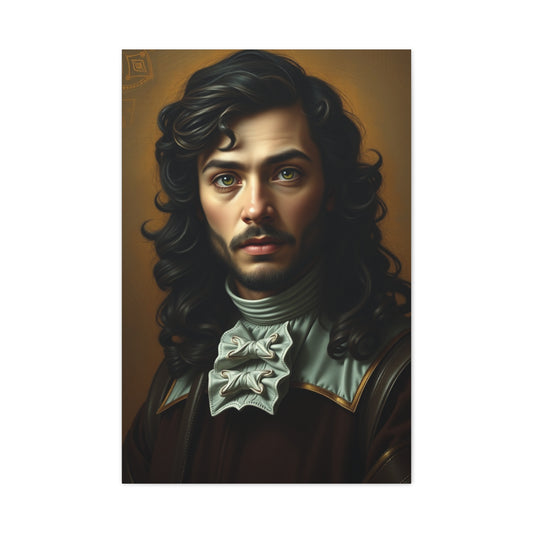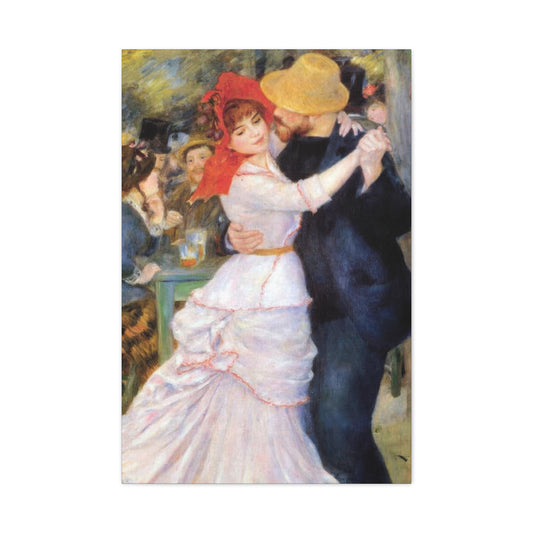Capturing ethereal, dreamlike portraits is an art form that combines light, location, styling, and patience to create images imbued with softness and a sense of otherworldly beauty. The secret lies in blending natural elements with creative techniques that evoke emotion and transport viewers to a place that feels serene and magical. Whether you are a budding portrait photographer or an enthusiast looking to elevate your work, this guide will walk you through everything you need to know to create those captivating, soft-focus photoshoots.
The foundation of dreamy photography starts with selecting locations rich in natural allure. Seek places with ambient light that gently caresses your subject, such as quiet gardens, wooded areas, beaches at dawn, or flower-filled meadows. Avoid harsh, direct sunlight that can create stark shadows, and instead favor diffused lighting that envelops the scene in a warm glow. Pay close attention to the model’s attire and props — flowing fabrics, light textures, and pastel colors work harmoniously to enhance the delicate atmosphere. Above all, take your time. Let the shoot breathe and unfold slowly; the most enchanting photographs often emerge when you allow moments to develop naturally, capturing genuine emotion and subtle movement.
14 Essential Techniques to Master Soft, Dreamy Portrait Photography
Achieving breathtakingly soft and ethereal portraits requires an understanding of light, composition, and creative effects. Below are fourteen expertly curated tips to help you craft images filled with whimsy, softness, and poetic elegance.
Harness the Power of Natural Light for a Tender Glow
Natural light is arguably the most treasured resource for photographers aiming to create ethereal and dreamy images. Unlike artificial lighting, which often requires meticulous setup, equipment, and experience, natural light is freely available and offers a dynamic spectrum of moods and effects throughout the day. Its variability and softness provide a fertile playground for capturing portraits with a delicate, otherworldly quality.
One of the most sought-after moments to shoot is during the golden hour — the magical window shortly after sunrise and just before sunset. During this time, the sun is low on the horizon, casting a warm, diffused glow that envelops subjects in a soft, flattering light. This light naturally reduces harsh shadows and highlights, giving skin a radiant, dewy appearance and creating an enchanting halo effect around hair and edges. The subtle warmth imbues photographs with a nostalgic and dreamy aura, making golden hour an indispensable tool for portrait artists.
Cloudy days provide another invaluable lighting scenario. The blanket of clouds acts like a giant diffuser, scattering sunlight evenly and eliminating the high contrast and stark shadows typical of midday sun. This creates a gentle, balanced illumination that is particularly flattering for skin tones and allows for greater control over exposure without intense adjustments. The muted palette on overcast days can also add a serene, moody atmosphere, which works beautifully for more introspective or romantic portraits.
Even when the sun is bright and harsh, photographers can still capture soft light by seeking out shade — beneath trees, awnings, or buildings. These natural diffusers create pockets of indirect light that soften facial features and reduce the squinting and unflattering shadows common in direct sunlight. The interplay of light and shadow in these shaded areas can introduce subtle texture and dimension, lending depth to the portraits while maintaining the dreamlike quality.
Experimenting with natural light means observing how it interacts with your environment at different times and in various weather conditions. Moving your subject, changing angles, or adjusting your shooting position in relation to the sun can yield vastly different results. Through consistent practice, you’ll develop an intuitive understanding of how to harness light’s transformative power to shape mood and enhance beauty in your photos.
To fully exploit natural light’s potential, consider the direction and quality of the light relative to your subject. Front lighting flattens features but highlights color and detail, making it suitable for clean, fresh looks. Side lighting introduces gentle shadows and dimension, emphasizing contours and texture, while backlighting offers a luminous rim that separates the subject from the background and produces a glowing, ethereal effect. Combining these with reflectors or diffusers can further refine the softness and balance of light in your portraits.
Natural light’s inherent softness makes it ideal for creating dreamy, timeless imagery. It invites spontaneity and intimacy, encouraging natural expressions and subtle gestures that artificial setups sometimes struggle to capture. With patience and a keen eye, you can transform ordinary settings into mystical scenes illuminated by nature’s own artistry.
Craft Your Own DIY Lens Filter for Subtle Softness
Creating a soft, hazy effect on your portraits need not require expensive specialty filters. Instead, simple household items can serve as effective DIY lens filters to introduce the dreamy diffusion that characterizes ethereal photography. These do-it-yourself solutions allow you to experiment with texture, softness, and color tints in a cost-effective and creative way.
One of the most popular and accessible methods involves using cling film. Stretch a thin layer of this transparent plastic wrap across your lens and gently secure it with small pieces of tape at the edges. The key to achieving the desired softness lies in the cling film’s slight imperfections—wrinkles, crinkles, and folds—that scatter incoming light and blur the image gently. If you want to intensify the effect, slightly crumple the film before attaching it, adding varying degrees of diffusion and light leaks that mimic the signature look of professional soft-focus filters.
Alternative materials can yield different artistic results. Translucent plastic bags, for example, can create a subtler haze with smooth gradations. Colored cellophane introduces tinted overlays that can alter the mood of your portraits—pastel hues for a gentle, vintage feel or vibrant tones for a whimsical twist. Using layers of these materials can combine softness with creative color manipulation, expanding your stylistic options without the need for digital post-processing.
This DIY approach offers a tactile, hands-on method to engage with your craft. By adjusting the tension, thickness, or placement of the film or plastic, you can fine-tune the softness and glow in real-time. This immediate feedback encourages experimentation and improvisation, enriching your creative process and helping you discover unique looks tailored to your vision.
In addition to cling film and plastic alternatives, other everyday items can be repurposed as makeshift filters. For example, sheer fabric like nylon stockings stretched over the lens produces a delicate diffusion effect. Vaseline smeared lightly on a UV filter creates a vintage-inspired, painterly blur (though care must be taken not to damage your lens). These tactile solutions add character and uniqueness to your photographs, evoking a dreamy ambiance without reliance on digital effects.
Using DIY filters also has the advantage of incorporating natural light artifacts into your photos—soft glows, subtle flares, and light streaks that enhance the ethereal atmosphere. These organic imperfections enrich the image with a handcrafted quality that can be challenging to replicate digitally.
While post-processing software can simulate soft-focus effects, achieving them optically preserves image resolution and natural gradation. It encourages photographers to think creatively in-camera, blending the physical environment and materials with photographic techniques for holistic artistry.
By integrating DIY lens filters into your toolkit, you open up new avenues for stylistic exploration. Whether shooting portraits, landscapes, or still life, these simple yet effective tools help you infuse your work with softness and mystery, hallmark traits of ethereal photography.
Use Wide Apertures to Achieve Beautiful Background Blur
One of the defining characteristics of ethereal, dreamy portraits is the use of a shallow depth of field that creates a soft, blurred background, elegantly separating the subject from their surroundings. This technique directs the viewer’s eye to the model’s face and expression, enhancing intimacy and focusing attention on the emotional core of the image. To accomplish this, photographers employ wide apertures, which correspond to low f-numbers such as f/1.4, f/1.8, or f/2.2.
Using a wide aperture opens the camera’s lens diaphragm to allow more light in, which simultaneously reduces the plane of focus. This selective focus results in the background melting into creamy, smooth bokeh—those out-of-focus light orbs and shapes that add a magical softness to your images. This effect can transform even busy or cluttered environments into gentle, unobtrusive backdrops that support rather than compete with the subject.
The choice of aperture directly impacts the visual story you tell. Wider apertures produce more pronounced background blur, perfect for portraits emphasizing mood and emotion. Slightly narrower apertures, like f/2.8 to f/4.0, still provide some background separation but introduce more context, making them suitable when you want to maintain an environmental connection without distracting from the model.
Mastering aperture control also requires careful attention to focusing accuracy. The shallower the depth of field, the smaller the margin for error. Slight misfocus can cause the subject’s eyes or key features to lose sharpness. To combat this, photographers often use single-point autofocus or manual focus to ensure precision. For portraits, focusing on the eyes is paramount, as they are the windows to the soul and anchor the viewer’s connection to the image.
Additionally, the choice of lens affects the quality and character of the background blur. Prime lenses with wide maximum apertures, such as 50mm f/1.4 or 85mm f/1.8, are prized for their ability to deliver smooth bokeh and exceptional sharpness on the subject. Telephoto lenses further compress the background, intensifying the blur and isolating the subject in a visually striking manner. Exploring different lenses allows photographers to find their preferred balance of softness, compression, and focal length to suit their style.
The interplay of aperture and focal length also influences the spatial perception in a photo. Wide apertures paired with longer focal lengths create a dreamy, intimate portrait where the subject feels almost suspended in a sea of softness. Conversely, using a wider angle with a large aperture can produce environmental portraits that still maintain a soft focus while capturing more surroundings.
Shooting with a wide aperture requires mindful exposure control. Because more light floods the sensor, especially in bright daylight, photographers must adjust shutter speeds or ISO settings to avoid overexposure. Utilizing neutral density (ND) filters is an excellent way to reduce light intake without affecting color, enabling the use of wide apertures even in harsh lighting conditions. ND filters are particularly useful during golden hour or midday shoots when you want to maintain that shallow depth of field with balanced exposure.
The creamy bokeh generated by wide apertures does more than simply blur backgrounds; it also lends a painterly texture to images, softening edges and colors. This contributes to the ethereal mood, making the photographs appear timeless and tender. The circular or hexagonal shapes of out-of-focus highlights, depending on the lens diaphragm design, can add artistic flair and visual rhythm.
Experimenting with aperture settings is crucial to developing an intuitive understanding of how it influences your photos. Try varying your aperture and focal length combinations in diverse lighting conditions and environments. Observe how the background changes from sharp to silky, and how it affects the subject’s prominence and the overall emotional tone of the portrait.
Embrace Nature’s Palette to Enrich Your Scenes
Nature is an extraordinary source of inspiration and aesthetic richness for dreamy portrait photography. Beyond merely serving as a backdrop, natural settings contribute intricate textures, harmonious colors, and subtle layers that bring portraits to life and evoke feelings of calm, romance, and enchantment.
You don’t need to journey to remote, exotic locations to find suitable natural environments. Local parks, community gardens, beaches, woodlands, or even urban green spaces often provide an abundance of flora, varied lighting, and diverse compositional opportunities. Seasonal changes—from spring blossoms and summer greenery to autumnal golds and winter frost—offer an evolving canvas that adds emotional depth and storytelling potential to your images.
Incorporating natural elements such as flowers, leaves, grasses, or water can frame your subject with organic shapes and colors. These details create a lush, multi-dimensional composition that guides the viewer’s eye and enhances the dreamy atmosphere. For instance, foreground foliage placed close to the lens can produce blurred, colorful accents, adding layers of softness and intrigue.
Utilize nature to provide your model with interaction points or props that evoke a sense of ease and authenticity. Leaning against a tree trunk, holding a bouquet of wildflowers, or walking through tall grasses introduces movement and narrative, transforming static portraits into vivid stories. Such interactions with the environment also help models feel more relaxed, resulting in more natural expressions.
Colors in nature are remarkably varied and can be harnessed to complement your model’s wardrobe and the mood you wish to convey. Soft greens, muted browns, gentle pastels, and warm earth tones often blend seamlessly into the ethereal aesthetic. The interplay of these hues with natural light creates a visual harmony that soothes the eye and enriches emotional resonance.
When choosing locations, consider the textural contrasts nature offers—rough bark against smooth skin, delicate petals beside flowing fabric, or shimmering water reflecting soft light. These contrasts add tactile richness to your portraits and emphasize the delicate beauty of the ethereal style.
The ambient sounds and atmosphere of natural settings can also influence the mood of your shoot. Birdsong, rustling leaves, or gentle waves create a calming environment conducive to capturing serene and contemplative expressions. These sensory details, though intangible, contribute significantly to the final image’s emotional quality.
Weather and natural phenomena add yet another dimension. Misty mornings, gentle breezes, or soft rains can infuse portraits with mystery and dreaminess. The way light refracts through dew or how petals move in the wind introduces ephemeral qualities that highlight the fleeting nature of beauty and moment.
To maximize the benefits of natural surroundings, scout your locations ahead of time and plan your shoot to coincide with optimal lighting and weather conditions. Arrive early to find the best spots and experiment with angles to capture nature’s best features in relation to your model. Remember, nature is ever-changing, and flexibility and adaptability are key to harnessing its full creative potential.
In conclusion, blending wide apertures with the abundant textures and colors of nature forms the cornerstone of creating truly dreamy, ethereal portraits. This synthesis invites viewers into a visual narrative where softness, emotion, and natural beauty coexist harmoniously. By mastering these techniques, you can elevate your photography to produce images that feel timeless, poetic, and captivating.
Match Your Model’s Wardrobe to the Environment for Cohesive Dreamy Portraits
Achieving a harmonious and visually captivating ethereal portrait begins with the thoughtful selection of your model’s wardrobe. The connection between the outfit and the environment plays a crucial role in amplifying the dreamy atmosphere and ensuring your photos evoke the desired mood and emotion.
When planning a photoshoot, first immerse yourself in the setting and observe its dominant colors, textures, and overall ambiance. Whether it’s a lush forest with deep greens and browns, a pastel-hued flower meadow, or a windswept beach with neutral sands and cool blues, these natural elements should inspire the wardrobe choices. Opt for fabrics and colors that complement the surroundings to create a seamless fusion between the model and the environment.
Flowing fabrics such as chiffon, silk, or soft cotton evoke movement and lightness, reinforcing the ethereal quality of the shoot. These materials catch breezes and sunlight in a way that adds a delicate fluidity to the images. Lace and crochet provide intricate textures that catch light softly, adding a vintage or romantic nuance to your portraits. Soft knits in neutral or pastel tones offer a cozy, intimate feel while blending naturally with outdoor settings.
Pastel hues like blush pink, lavender, sky blue, and mint green blend beautifully with many natural palettes. These gentle colors avoid harsh contrasts and help maintain the softness essential to dreamy photography. Earthy tones such as warm beige, muted olive, soft browns, and creamy whites are equally effective for producing grounded yet serene images.
Complementary color schemes work well to unify the composition. For example, a model wearing a warm peach dress against a backdrop of autumnal foliage creates a visually pleasing synergy. Alternatively, subtle contrasts can introduce depth and interest; pairing cooler clothing tones with warmer environmental hues or vice versa draws attention to the subject while maintaining a balanced image.
Details matter enormously in ethereal portraiture. Accessories such as delicate floral crowns, vintage jewelry, or minimalist hairpieces can enhance the narrative and add layers of storytelling. Even seemingly minor elements like nail polish color, eye shadow, or contact lenses contribute to the overall aesthetic. For instance, soft golden or pastel eye makeup can catch natural light, adding sparkle and dimension to close-up shots.
Consider how the outfit interacts with light. Matte fabrics absorb light and create gentle shadows, while satin or silk can produce subtle highlights and reflections, adding to the dreamlike feel. Think about how layers, ruffles, or draping can create movement and texture, inviting the viewer into a visual experience that feels tactile and immersive.
Encourage your model to embody the spirit of the setting through their posture and gestures, allowing the wardrobe to come alive naturally within the environment. This cohesion between clothing, light, and setting is what transforms simple portraits into evocative, timeless works of art.
Create Magical Effects with Double Exposure Techniques
Double exposure is a captivating creative technique that blends two separate images into one, resulting in surreal, layered compositions that elevate portrait photography into the realm of fine art. This method allows photographers to intertwine natural elements with human subjects, crafting narratives that feel both poetic and dreamlike.
To create double exposures, start by capturing portraits against plain or minimalistic backgrounds, ideally with strong silhouettes or clean lines. This ensures the second image, often a nature scene, can integrate seamlessly without overwhelming the subject. Photos of trees, clouds, flowing water, flowers, or abstract textures are excellent choices for the overlay layer.
In post-processing software, such as Adobe Photoshop or Lightroom, overlay the nature photograph onto the portrait. Use blending modes like Screen, Overlay, or Lighten to merge the images, adjusting opacity to balance visibility and integration. The Screen mode is particularly effective for creating a luminous, ghostly effect by making the darker areas transparent and allowing the lighter tones of the nature image to shine through the portrait.
To refine the composition, selectively mask areas or use gradient tools to soften transitions between the two images, ensuring the double exposure feels cohesive rather than jarring. Play with contrast, saturation, and color grading to unify the tones across both layers, reinforcing the ethereal mood.
Double exposures open up a world of creative possibilities. You might merge a close-up portrait with the delicate petals of a flower, enveloping the subject in softness and color. Alternatively, use the sweeping curves of clouds or the intricate patterns of tree branches to frame the model’s face or body, adding a sense of mystery and connection to nature.
This technique invites viewers to engage more deeply, as the layered images encourage exploration and interpretation. Double exposures also allow you to express complex emotions or themes, such as fragility, growth, or transcendence, through visual metaphor.
Experimenting with multiple nature images or adding subtle motion blur can enhance the dreamlike atmosphere further. Each variation you create adds uniqueness and personal artistic signature to your work.
By mastering double exposure, you not only improve your technical skills but also expand your narrative vocabulary, offering fresh perspectives in portrait photography that captivate and inspire.
Introduce Foreground Elements for Depth and Softness in Dreamy Portraits
One of the most effective techniques to add intimacy and a tactile quality to your dreamy portraits is by incorporating soft foreground elements. These blurred objects in the foreground create layers within your composition, which not only add visual interest but also enhance the depth, drawing the viewer’s eye gently toward the subject.
To achieve this effect, position translucent or semi-transparent objects close to your camera lens. Examples include delicate flower petals, lace fabric, tulle, or sheer scarves. These elements introduce subtle color washes and soft textures that blend with the background, creating an almost painterly softness around your subject. The foreground blur acts like a natural vignette, framing your model in a delicate cocoon of light and texture.
Another creative method involves partially covering your lens with your finger, a piece of colored plastic, or petals. This can produce charming light leaks and unexpected color shifts that add character and uniqueness to your portraits. These light leaks, often reminiscent of vintage or film photography, infuse your images with an organic, dreamy aesthetic that’s difficult to replicate digitally.
Experimenting with different materials and their placement allows for endless creative possibilities. For instance, gently moving a piece of fabric during exposure can create a soft motion blur, adding a dynamic, ethereal feel to the image. Using objects with varying translucency can also alter the amount of softness and light diffusion, giving you control over the atmosphere you want to evoke.
Incorporating foreground elements encourages a more immersive composition, giving your portraits a sense of depth and spatial complexity. It invites viewers to feel as though they are peering through layers, stepping into the scene rather than observing from a distance.
When working with models, communicate clearly about how these elements interact with the shoot. Their positioning, movements, and expressions should harmonize with the soft textures to create a cohesive story. Whether the model gently interacts with the foreground element or simply exists within its embrace, the combination enhances the dreamlike narrative of your portrait.
Lighting plays a crucial role in maximizing the impact of foreground blurs. Soft, diffused light complements the gentle textures, ensuring that shadows are minimal and highlights are tender. Harsh lighting, conversely, may create unwanted contrasts and detract from the softness. By carefully balancing light and foreground effects, you create portraits that feel tender, intimate, and visually compelling.
Utilize Curtains and Sheer Fabrics for Enchanting Indoor Portraits
Indoor portrait photography offers unique opportunities to create ethereal and dreamy images by harnessing natural window light softened by curtains or sheer fabrics. This approach transforms ordinary interiors into magical spaces filled with soft, enveloping light that flatters your subject and enhances mood.
Position your model near a large window with sheer curtains that filter sunlight, turning direct rays into a delicate, diffuse glow. This gentle lighting smooths skin texture, reduces harsh shadows, and creates a natural, glowing aura around the subject. The translucent fabric acts as a giant softbox, spreading light evenly and allowing you to capture subtle details and soft color gradients essential for dreamy portraits.
Experiment with various window orientations and curtain types. North-facing windows provide consistent, cool-toned light, while south-facing windows deliver warmer hues during certain times of the day. Different curtain fabrics—cotton voile, organza, or lace—offer distinct diffusion qualities and textures, which can subtly alter the portrait’s feel.
Backlighting your model with sheer curtains between them and the light source adds a halo effect that enhances the ethereal quality. This rim lighting can outline hair and shoulders with soft light, separating the subject from the background and giving images a three-dimensional depth. Adjusting your shooting angle can produce silhouettes or glowing contours that emphasize shape and form rather than details, inviting a more poetic interpretation.
Side lighting through curtains creates gentle shadows and highlights that sculpt the model’s features delicately. This chiaroscuro effect is ideal for adding emotional depth and moodiness to portraits while maintaining softness. The interplay of light and shadow becomes a visual metaphor for complexity and subtlety.
Indoor shoots also benefit from the intimacy and controlled environment, allowing you to focus on composition, expression, and texture without external distractions. The quiet ambiance and ability to direct the flow of natural light help foster connection between the model and photographer, which is often palpable in the resulting images.
To enhance these effects further, combine the use of curtains with complementary elements such as soft fabrics draped around the model or reflective surfaces nearby that bounce light back onto the face. These additions enrich the atmosphere, adding layers of softness and light play that reinforce the dreamy aesthetic.
In post-processing, gently enhancing the softness, reducing contrast, and applying subtle glow effects can amplify the natural light diffusion created by curtains and sheer fabrics. However, the magic begins at the moment of capture, so mastering these lighting techniques is essential.
Together, foreground elements and diffused window light form a potent combination for creating portraits that feel tender, immersive, and ethereal. By thoughtfully integrating these techniques, photographers can craft timeless images that invite viewers into a dreamlike world where softness and light reign supreme.
Explore Submerged Portraits with Bathtub or Water Shoots
Submerged portrait photography is a unique and enchanting way to add an artistic and ethereal dimension to your images. By photographing models immersed in bathtubs or shallow pools, photographers can harness the natural properties of water—its reflectiveness, translucency, and fluidity—to create surreal and painterly scenes that captivate the viewer. These shoots offer endless creative possibilities to infuse softness, texture, and delicate color into your portraits.
One of the most popular techniques in submerged portraits involves adding milk or other diffusing agents to the water. Milk creates a beautiful milky opacity that diffuses light in a tender and flattering way. The result is a smooth, dreamy quality that softens skin tones and diminishes harsh shadows. This diffusion transforms what might be a simple portrait into an otherworldly scene reminiscent of impressionist paintings. The water acts as a medium that scatters light delicately, enveloping the model in a glow that is both natural and magical.
In addition to milk, adding colored dyes or petals to the water enhances the visual complexity and depth of your images. Floating flower petals, leaves, and vibrant blossoms introduce texture and bursts of natural color that complement the softness of the water. These organic elements interact with reflections and the gentle movement of water, creating dynamic compositions filled with life and vibrancy. Each swirl and ripple adds a layer of mystery and delicacy that accentuates the ethereal mood of the portrait.
Working with water as a medium requires thoughtful planning and preparation. Models should feel comfortable and safe, so maintaining the water at a warm temperature and using shallow depths is essential. Guiding your model’s movements slowly and gracefully allows the water to create elegant shapes and flows around them, enhancing the fluidity of the composition. Capturing expressions that convey tranquility or introspection fits perfectly with the serene and dreamy atmosphere that submerged portraits evoke.
The reflective nature of water also opens up exciting opportunities for creative lighting and composition. Experiment with overhead natural light or soft artificial lighting to create subtle glimmers on the water’s surface. Reflections can double the visual narrative by mirroring the model’s face or surrounding flowers, producing mesmerizing symmetrical effects. The translucent qualities of the water soften all edges, blurring the line between reality and imagination.
Post-processing is an important step to elevate these images further. Enhance the soft contrast and gently increase highlights to amplify the glow. Color grading can bring out pastel tones or emphasize warmth, depending on the mood you want to convey. Fine-tuning shadows and clarity can help balance the dreamlike softness with sufficient detail to keep the portrait engaging and crisp.
By exploring submerged portraiture, you add a breathtakingly poetic dimension to your photography. These images transcend traditional portraiture, offering viewers a glimpse into a realm of softness, fluid beauty, and delicate grace.
Master the Art of Backlit Portraits
Backlit portraits are among the most effective and evocative methods for creating images that feel both soft and dramatic. This technique involves positioning your model between the camera and a strong light source, often the sun during sunrise or sunset, to produce a luminous halo or rim light around the subject. Backlighting not only separates your subject from the background but also adds depth, texture, and an ethereal glow that is ideal for dreamy portraiture.
The golden hours—early morning and late afternoon—are particularly advantageous for backlit photography because the low sun provides warm, diffused light that gently wraps around the model. This creates an atmospheric haze, softening details and imbuing the image with a nostalgic, almost mystical quality. The subtle flare of sunlight around hair, shoulders, and edges can make your portraits feel luminous and weightless, enhancing the sense of intimacy and vulnerability.
When shooting outdoors with backlight, it’s crucial to expose carefully. Metering can be tricky as the bright light behind the model may cause your camera to underexpose the face. Use fill flash, reflectors, or post-processing to restore detail in the shadows without losing the softness of the backlight. This balance maintains the natural glow while ensuring facial features remain visible and expressive.
Indoors, backlit portraits can be created using artificial lighting. Place a soft, diffused light source behind the model and use a reflector or softer frontal light to illuminate the face, preventing it from falling into shadow. This setup mimics the magical halo effect of the sun while offering more control over light intensity and direction. You can experiment with different modifiers such as softboxes or diffusers to achieve the desired ethereal quality.
Backlighting also allows you to creatively capture silhouettes or rim-lit profiles, emphasizing shape and form over detail. This approach can transform a simple portrait into a striking, artistic statement filled with mood and atmosphere.
Lens flares, a common byproduct of backlit photography, add an enchanting, cinematic touch to images. When used thoughtfully, flares introduce pops of color and light streaks that enhance the dreamy aesthetic. Positioning the camera at different angles relative to the sun or light source controls flare intensity and placement, allowing you to use this effect as a compositional tool.
Together, submerged portraits and backlit techniques offer photographers a rich palette for crafting portraits that mesmerize and move. These methods emphasize softness, light diffusion, and atmospheric layering—core elements in creating images that feel like visual poetry.
If you want to take your dreamy portraiture to the next level, consider combining these techniques with other creative elements such as reflections, smoke, or natural foregrounds. Mastery of light and mood will ensure your work stands out with emotional depth and ethereal beauty.
Use Windows and Reflections to Add Layers and Interest
Shooting through windows or reflective surfaces creates multi-dimensional images rich with visual interest. Reflections can introduce color, abstract shapes, and soft overlays that add complexity. Focus on your model’s eyes or face by using wide apertures to blur distracting reflections, maintaining sharpness on key details. Windows also help frame your subject naturally.
Incorporate Smoke Bombs for Textured, Atmospheric Shots
Smoke bombs provide dynamic color and texture that animate outdoor portraits. Their swirling, semi-transparent plumes diffuse light and add an otherworldly aura. Using colored smoke allows customization of mood, from mystical pastels to vivid contrasts. Handle smoke bombs safely and plan for weather and wind conditions to maximize their visual impact.
Create Intriguing Shadows with Harsh Lighting
While soft light is standard in dreamy portraits, using harsh light creatively can produce compelling shadows and textures. Position your model near windows with patterned light filtered through lace, leaves, or blinds. The resulting shadows play on the face and surroundings, adding mystery and dimension without sacrificing softness.
Brighten Your Portraits with White Backgrounds
White walls or light-colored backgrounds bounce light evenly, adding brightness and a natural glow to your portraits. White outfits further enhance this effect, producing clean, airy, and cheerful images. White can be softened during editing for creamy, pastel aesthetics, making it an excellent foundation for dreamy photography.
Bringing Your Dreamy Portraits to Life
Dreamy portrait photography is a delicate dance of light, texture, color, and emotion. It requires not only technical skill but also a sensitivity to mood and atmosphere. By utilizing natural light, embracing simplicity, experimenting with creative techniques like double exposures or smoke, and thoughtfully planning outfits and locations, you can consistently produce portraits that feel like visual poetry. With practice, patience, and curiosity, you will develop a distinctive style that transports viewers into serene and enchanting worlds captured through your lens.













